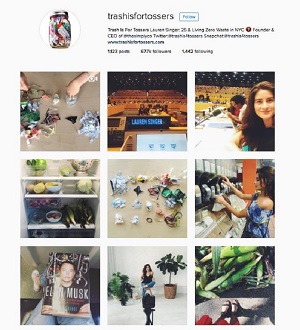Bachelors in biology students learn the keys to living a zero-waste lifestyle
What if, as a biology student, you really lived the lessons learned in Introduction to Environmental Science about conserving the environment and preserving clean air and clean water? If you carried a reusable water bottle with you to refill throughout the day, or when you went to the grocery store you brought your own reusable shopping bag made from recycled materials.
What if you put change into action in your daily life, or on campus through organizations like Sustaining the Woods, William Woods’ student recycling committee?
Every small step towards a waste-free life is essential in the fight to preserve this beautiful planet we live on.
According to the U.S. Environmental Protection Agency (EPA), each year Americans produce a total of 254 million tons of trash.
To put that number into perspective, in one year the amount of garbage we produce weighs the same as 1.2 million blue whales, and if stacked would reach the height of the moon and back 25 times.
A recent Land of Waste report from Save on Energy, a company that allows consumers to compare electricity plans, used EPA data to visually represent the spread of landfills across the U.S.
There are over 2,000 active landfills across the country according to the report, providing a time-lapse view of the expanse of landfills over the past 100 years. The report also breaks down the amount of trash in landfills per person, per state. Missouri falls right in the middle, with 22.3 tons of trash produced per person each year.
Landfill gas can be dangerous and have harmful effects on our ecosystem: producing methane and carbon dioxide emissions, with trace amounts of oxygen, nitrogen, hydrogen and nonmethane organic compounds (NMOCs), which can cause smog if uncontrolled and effect our air quality.
One major concern of environmentalists, according to the report, is that methane gases absorb the sun’s heat and contribute greatly to global warming.
Efforts are being made to slow the growth of these landfills, with over a 34 percent recycling rate in 2013.
One great role model to follow in the path to recycling and leaving a light-footprint is 25-year-old Lauren Singer, who was recognized in the news for producing so little trash that she can fit four-years-worth of waste into a single, 16-once mason jar.
 On her blog, Trash is for tossers, Singer shares two easy steps that biology students can follow to live a zero-waste lifestyle.
On her blog, Trash is for tossers, Singer shares two easy steps that biology students can follow to live a zero-waste lifestyle.
- Evaluate — take a look at your daily life. How much garbage are you producing and what types? What do I actually use on a daily basis and what can I live without? What products do I use that I can find a more sustainable option for? How much and what do I really need to be happy?
- Transition — start to downsize and properly dispose of unnecessary things. Buy food in bulk. Replace plastic items with sustainable, long-lasting alternatives, such as stainless steel, wood and glass. Get creative, cut out the clutter, and think organic, local and reusable.
“I’ve changed my lifestyle and prevented thousands of pounds of trash going to landfill,” says Singer. “I believe that one person can make a difference, it’s just having a desire to do so.”

